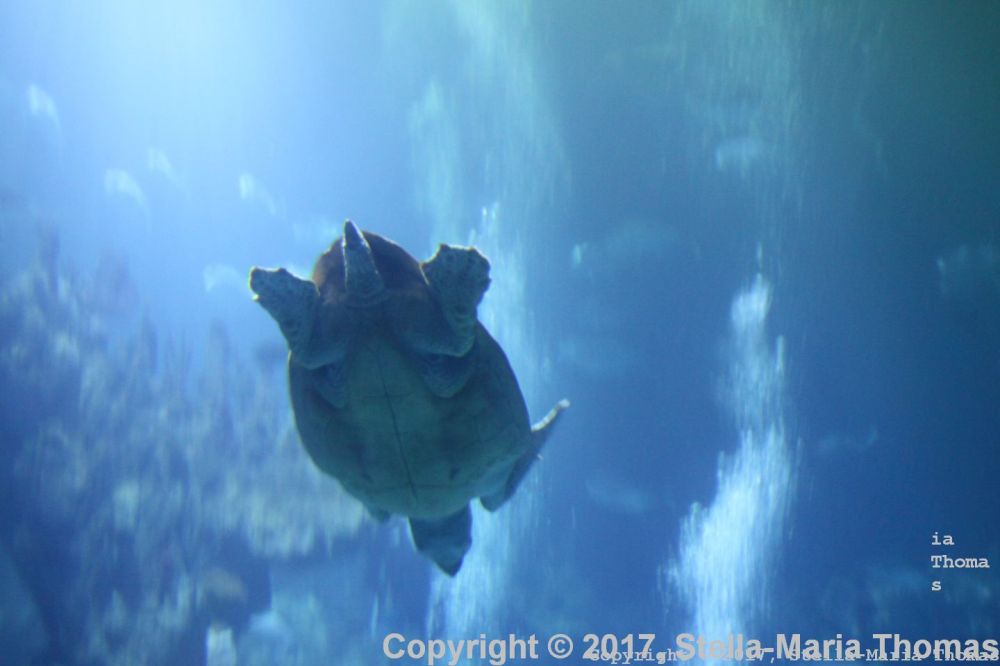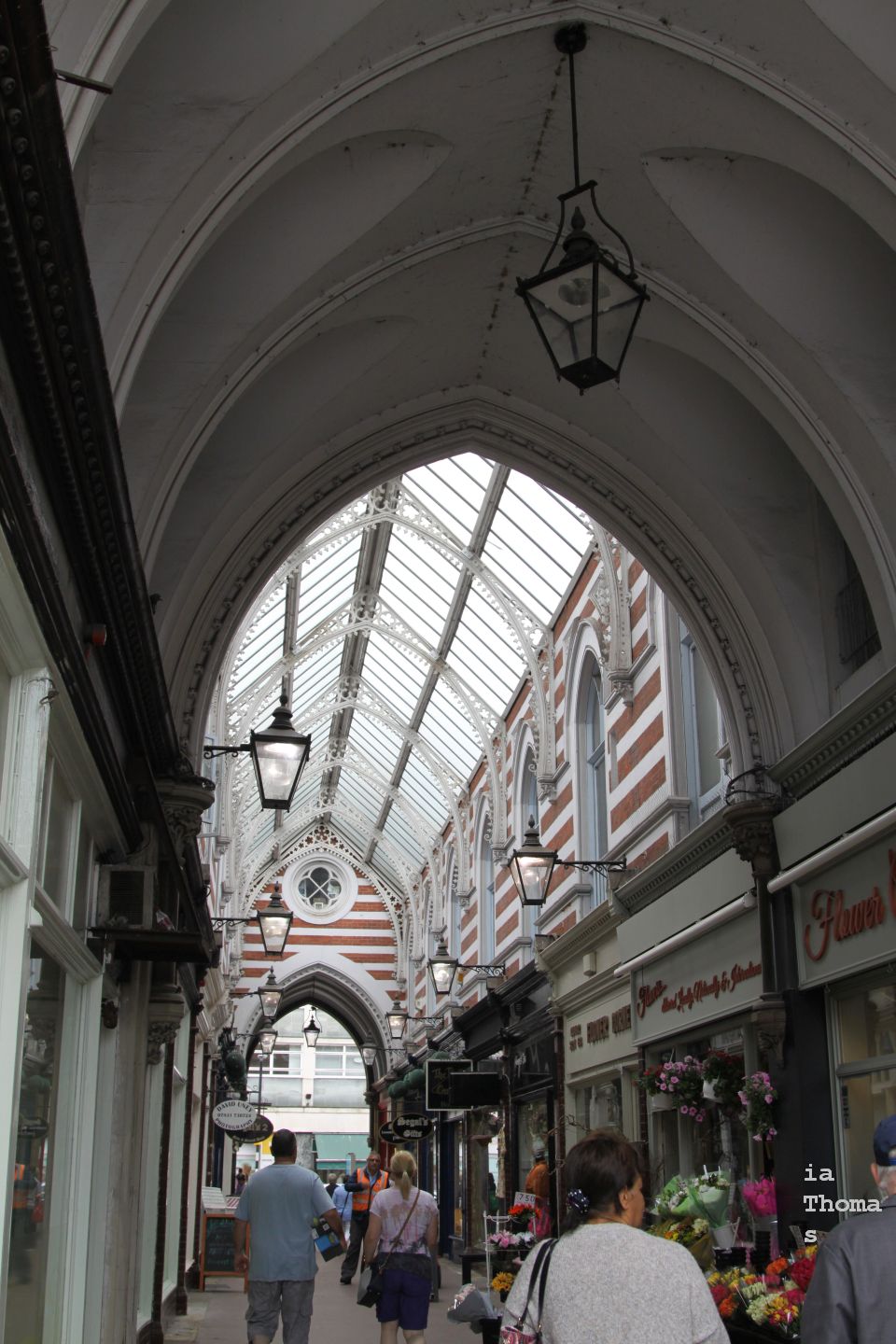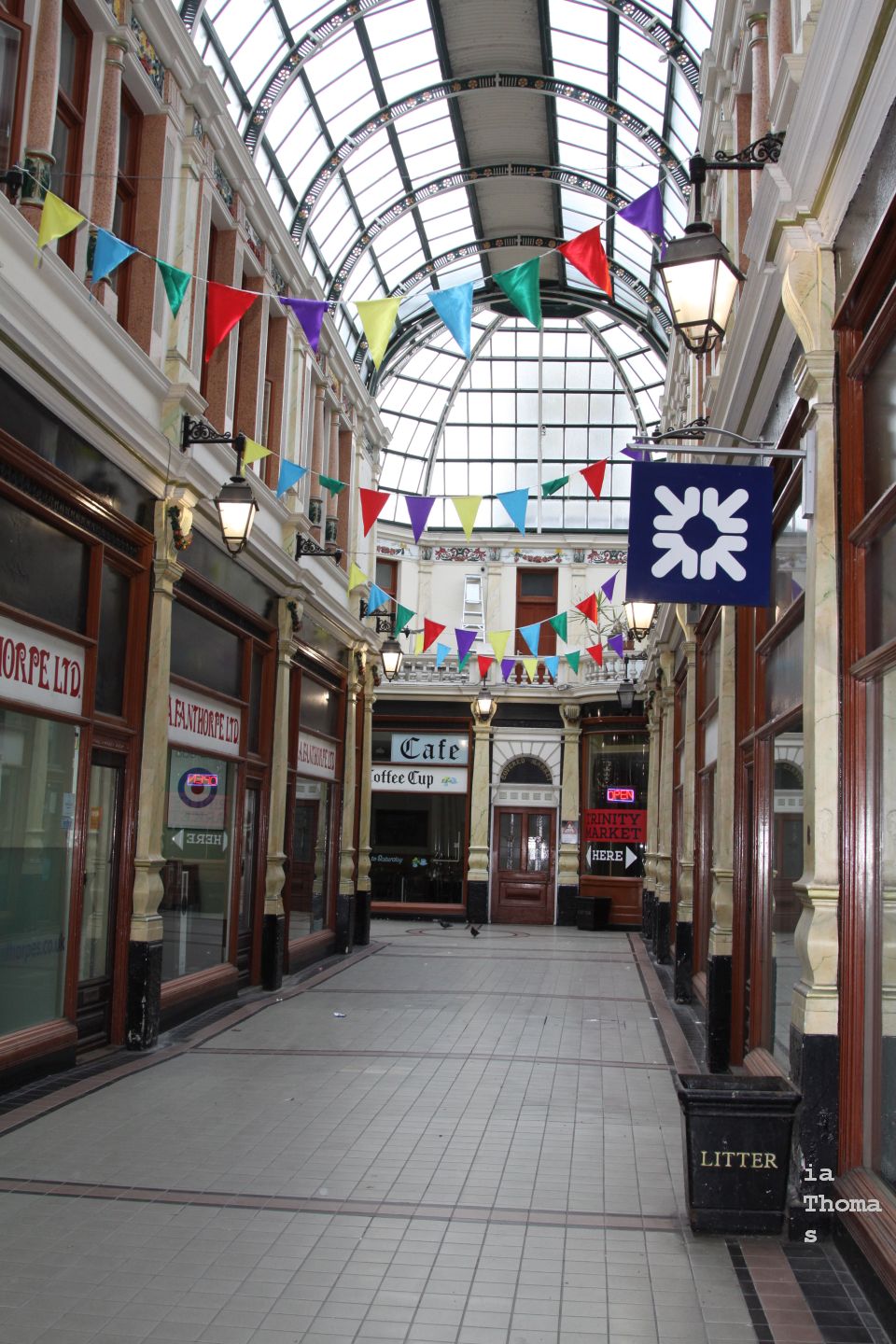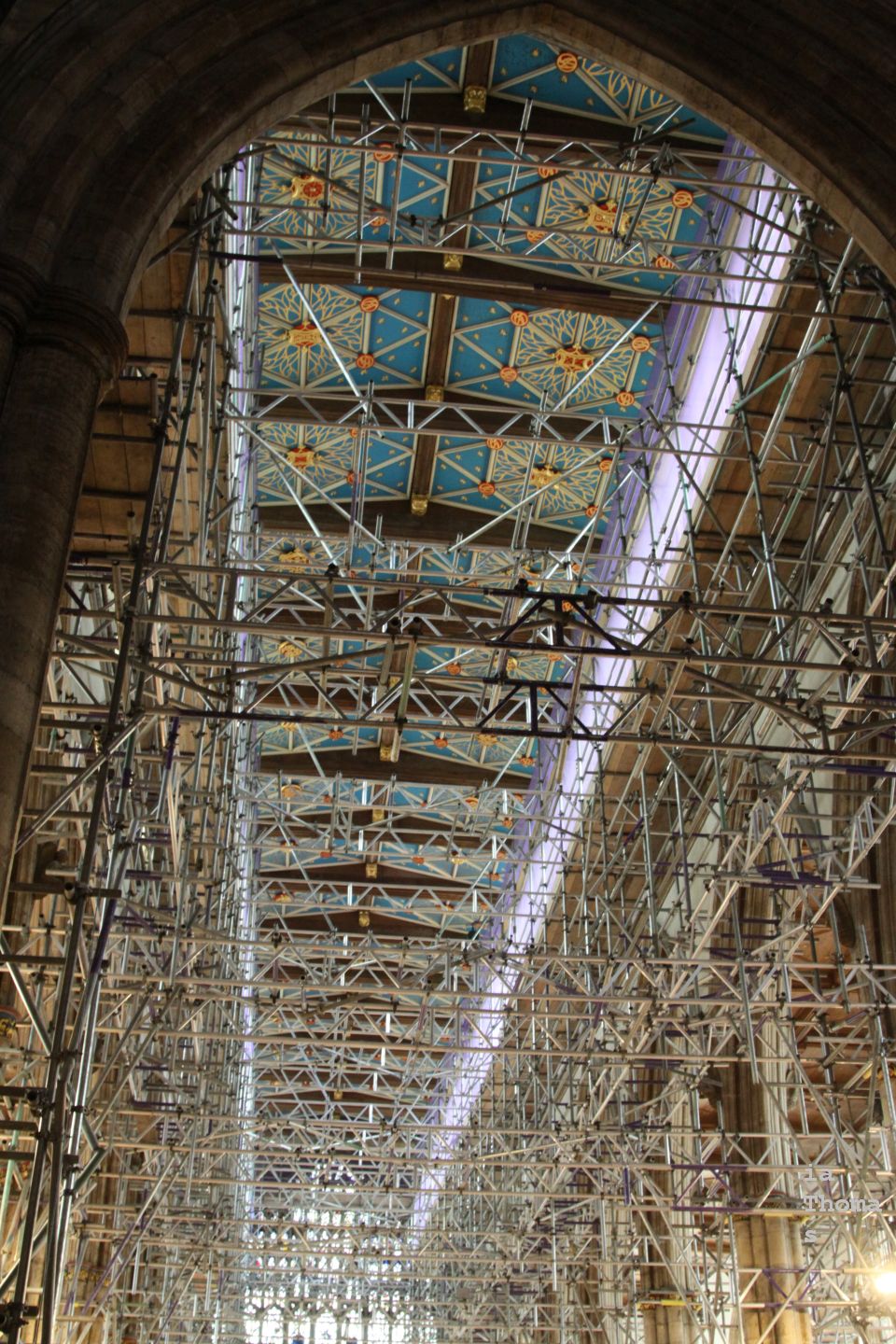Friday, 25th/Sunday, 27th May 2017 – Kingston-upon-Hull (Hull), Pocklington
As some of you may know, Hull – or more properly Kingston-upon-Hull – was 2017 UK City of Culture, with the result that there was much activity around the city, and beyond, to publicise it, and for that matter to share some of the art that resulted. We didn’t get to quite as many things as I might have liked, but we did a pretty good job of seeing the things we were really interested in, from a production of Richard III, a restoration-style farce, The Hypocrite, loosely based on real events during the course of the English Civil War, and a modern piece about the trawlermen’s wives and their stand to make their menfolk safer, The Last Testament of Lillian Bilocca, penned by the wonderful Maxine Peake (which I will cover in a second post).
Now I could have sworn I’d written about all of this, but it appears I haven’t. Before I completely forget I’ll tackle the stuff we did when we weren’t in the theatre or in a restaurant somewhere. The Hypocrite we saw in Stratford-upon-Avon in the Swan Theatre, largely because I couldn’t lay hands on a single ticket in Hull; it was completely sold out. And as Stratford is just an hour’s drive maximum away from home, we went there instead.
As a result our first visit to my home town was in May, when we went to see Northern Broadsides’ production of Richard III at the Hull Truck Theatre, a brand new establishment to me, because back when I last lived in the town they were based in what pretty much amounted to an old shed in the old town area. Anyway, we decided we’d go up the day before and see some of the other attractions around the town (Lynne had never been to The Deep so that was on our schedule) as well as eating out at our favourite pair of local restaurants, Whites, on the Friday night, and Rascill’s on our way home on the Sunday for lunch. We would also try a restaurant that was new to us on the Saturday night in the shape of 1884 Dock Street Kitchen, all of which I’ve already talked about.
We booked an Airbnb appartment close to the old town centre, and within easy walking distance of both The Deep and Hull Truck Theatre, but the plan was always to go straight to The Deep and afterwards go and check into our accommodation. The Deep itself is an interesting building, designed to look like the prow of a ship pointing out towards the confluence of the River Hull and the much, much bigger Humber. It’s an aquarium, but also a marine research facility, and offers over 3,500 specimens of marine life for the interested visitors. It was very quiet on our visit, probably because it was relative early in the day on a school and work day which meant we could take our own sweet time and we didn’t need to battle crowds of small people to look closely at the exhibits. They have a particularly fascinating collection of rays, and sharks and other such creatures.
They also now have a breeding colony of very cute (and very smelly) Gentoo penguins, one of which was settled on a nest and looked to be incubating an egg, or if not trying to hatch a collection of stones.
The thing that has always fascinated me the most though is the collection of jellyfish as the float along, glowing with phosphoresence, in a cylindrical tank. There is something very other worldly about them.
Oh and let’s not forget the very strange world of the sea-anenomes.
There are also corals by the dozen.
And turtles. As a Terry Pratchett fan, I can’t overlook the turtles, which were very fine indeed.
There is also a collection of amphibious creatures which often reward close study, partly because in some cases it will require close study of the tanks they are in before you can actually spot them! In addition to all the usual things you might expect to find there was an exhibition of some utterly glorious wildlife photography to round things off perfectly.
Once we’d finished in there we walked around the waterfront for a while just to see what has been done in the area. While we were out there, we were treated to an unexpected display of what I assume was a practice air-sea rescue.
It was all quite unexpected. From there we went to take a closer look at the tidal surge barrier, a much needed innovation when it was completed in 1980. It is apparently now a listed building.
We took a swing along the newly rejuvenated Fruit MarketFruit Market which is now a ramshackle but attractive collection of bars, cafes and art galleries. It didn’t use to be like that when my Dad worked there as a fruit porter early on in his working life in the UK (and where my late, lamented godfather managed to drop a crate of oranges on his head)! It’s changed a bit now.
From there we strolled round the Marina to the old pier, from where the ferries that ran across the Humber used to go, prior to the completion of the Humber Bridge in 1981.
There’s a lot to see and on a sunny, but blustery day we figured we’d done enough. We headed for our lodging, stopping long enough to check the location of 1884 for the following evening.
On the Saturday there was again an element of strolling around looking at the newly tidied up Old Town area, and the many buildings of interest as we walked to the theatre and then ambled back after the performance.
We began with the area around the Airbnb which took us past the Old Grammar School, originally (in 1583) the Hull Merchant Adventurers’ Hall, and then a grammar school from 1766 for just over 100 years, before ending up as Holy Trinity Choir School.
Among the alumni are one of my favourite poets, Andrew Marvell, and William Wilberforce, whose house in the city is also a museum. The school became a museum in 1987, and is now the Hands on History Museum, a somewhat eclectic institution telling the story of Hull, but also housing Egyptian artefacts and a Victorian schoolroom recreation! We didn’t have time to dip in unfortunately, so it will have to wait for another time. There is a rather “Victorian” statue of Marvell outside, presiding over what used to be the Market Square.
The market square itself is surrounded by a number of interesting buildings, which is surprising in some ways given the heavy bombing the city sustained in WWII, when Hull was the most severely damaged British city or town, with 95 percent of houses damaged.. It was under air raid alert for 1,000 hours, and was the target of the first daylight raid of the war and the last piloted air raid on Britain. Of a population of approximately 320,000 at the beginning of the war, around 152,000 were made homeless as a result of bomb destruction or damage, and 1,200 people were killed and 3,000 injured by air raids, which destroyed more than 5,000 houses along with half of the city centre. The result, certainly during my childhood in the 1960s, was some truly ghastly new buildings that had no place in an historic town centre, though luckily a lot survived including Holy Trinity and St. Mary’s churches, the former now upgraded (as of 2017) to a Minster, and apparently “the largest parish church in England by floor area”. We made a mental note to pop in later in the day as there seemed to be a wedding in progress.

We also skimmed past the newly-renovated Trinity Market, where my parents did much of their food shopping in my childhood years. They wouldn’t be able to now, the place currently looking rather bear of stall-holders and with the Council apparently determined to gentrify it into some sort of foodie central given some of what I’ve heard, with stalls now going at anything from £82 a month to a somewhat eye watering £745.
From there it was along the side streets leading to Prince’s Quay shopping centre, taking in Trinity House on the way.
From there we crossed to Victoria Square where Her Majesty is still perched above the loos… and very splendid loos they are too. To be fair, she also overlooks the City Hall and the Maritime Museum.
There was more in the way of history when we passed the end of Paragon Arcade, one of two shopping arcades in Hull that are still in business (the other one being the Hepworth Arcade at the other end of the city centre). A bakery was in on the City of Culture thing, selling themed cupcakes and the whoe arcade was looking very fresh for a Victorian building!
It’s a short walk to the Hull Cenotaph from there, so we stopped off to admire it. It’s a very fine object actually and has obviously also been cleaned up recently, presumably in the run up to 2017. Although it has no specific names on it, it commemorates the Second Boer War (1899-1902), the First and Second World Wars and the Korean War (1950-1953). The cenotaph stands behind an original sculpture of two Boer War soldiers, and the memorial cenotaph is Grade II listed.
On arrival at Hull Truck Theatre we discovered that our plan to get a light lunch was not going to bear fruit unless we completely changed the venue for that part of the plan. We headed towards the main Library where I knew we could get at least a cup of tea and a sandwich and ended up in the new Venue cafe where a portion of beans on toast proved to be somewhat more substantial than I’d really wanted.
It was all a bit scary, Washed down with a cafe latte it was more than enough to get us both through to the evening and our restaurant reservation.
After the performance, we walked back past the statue of another of Hull’s famous children, Amy Johnson.
From there it was back to the Airbnb, by way of Hepworth’s Arcade.
Apparently it was home to one of the first Marks and Spencer penny bazaars, but now contains a second hand clothes shop run by an ex-colleague of my mother’s, a superb tv and hifi store (Fanthorpe’s ) and a variety of other establishments. It was built by Joseph Hepworth who started buying up plots along what is now the arcade in 1888, and possibly completed the new building by 1897. The original intention to name it Victoria Arcade in honour of the reigning monarch was dropped by Hepworth who instead named it after himself. By now we were almost back at base camp, so we decided to take a quick look inside the Minster. There was a great deal of scaffolding…
However, the bits that were already complete in the great restoration plan looked glorious.
I do love a medieval roof space! I also love the windows and the exterior.
On our way across the market square we ran into a stag party that was a) mixed and b) having a great time. They were very friendly…
The following day we allowed ourselves a slow start before heading off to Raskelf and Rascills, calling in at what was soon to be my ex-house at 1062 Holderness Road. Having inherited it when my Mum died, I finally managed to find a buyer for it in July of 2017 after almost a year of trying to market it. I collected the post the estate agent had neglected to bother with, made sure everything was still turned off, and took a few photos to make sure I know what its current condition was. It had been a satisfying – and useful – visit to the town of my childhood.
Realising we were slightly ahead of schedule, we took a coffee stop in Pocklington on the way to Raskelf, finding a very pleasant cafe in the town centre, and discovering that there was some sort of walking event coming to an end in the local church across the way. There’s always something happening when we go places, sometimes with us not expecting it at all.


























































































































































































































































































Great post. Hull has become a real favourite with me. Especially the free admission museums.
LikeLike
It’s taken time – and distance – for me to appreciate it again I must admit. And there is still much that needs sorting out there, but the City of Culture thing really did give it one hell of a boost.
LikeLike
There is a really good fishing museum there where volunteer ex fisherman will gladly keep you there all day!
LikeLike
Oh yes, the Maritime Museum. I spent quite a lot of my childhood hanging about there and at the archaeology museum.
LikeLiked by 1 person